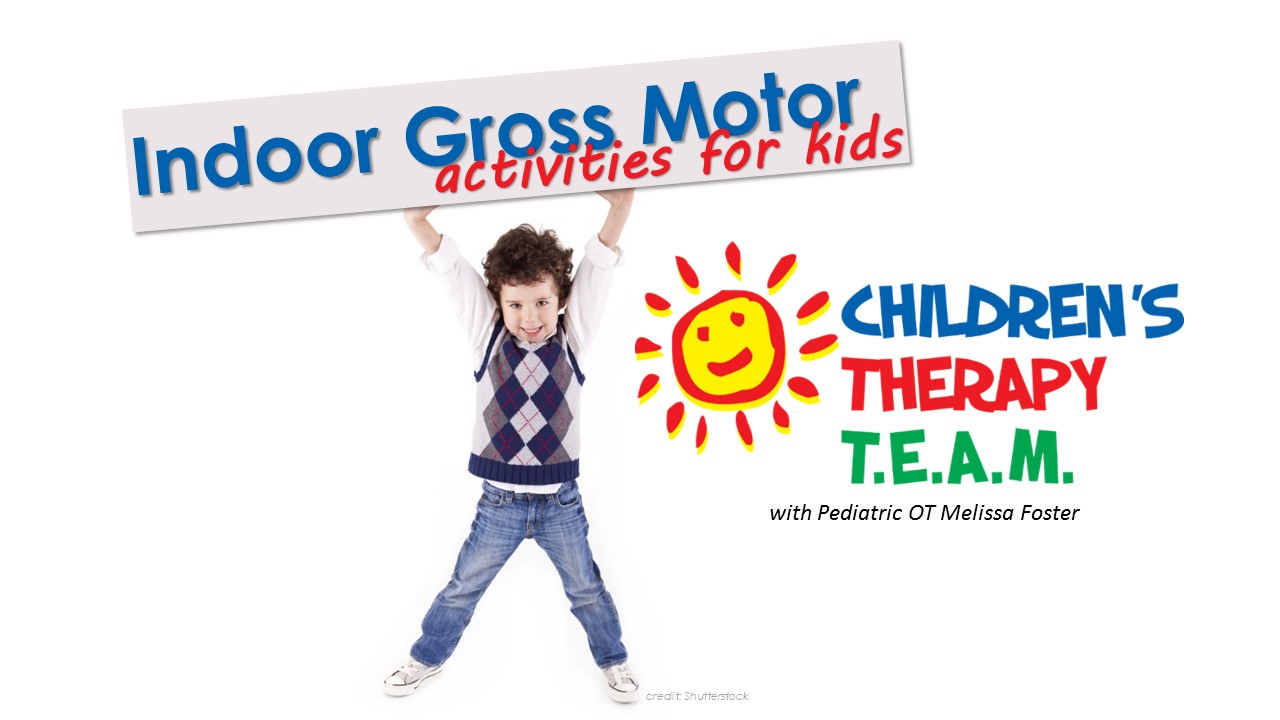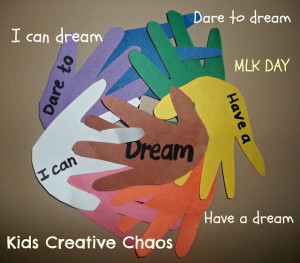Dear Melissa,
I have 3 boys in Elementary/Preschool. Now that the weather has turned colder, how do I help them use up all of their energy with indoor activities?
I have 3 boys in Elementary/Preschool. Now that the weather has turned colder, how do I help them use up all of their energy with indoor activities?
When the weather is warmer, it is so nice to simply say, “Let's go outside!” when the kiddos start getting a bit wild and crazy. But, here in Arkansas, winter has officially set in. We rarely get the wonderful snow that is so much fun, and the temperatures often make playing outside less than desirable. Despite what the thermometer says, kids still need to burn energy, work on gross motor skills, and get their bodies moving in general. In addition, multiple studies have shown that 30 minutes of regular exercise is actually more beneficial than medication when treating many mental health issues such as ADHD and depression. Exercise - what a fantastic way to beat the winter blues! The following are a few tips for keeping their bodies moving, even in winter.
Indoor Gross Motor Activities for Kids
- Dance Party! Have you ever heard dance music floating through the halls at Children’s Therapy TEAM? That would most likely be our creative and energetic Occupational Therapist, Whitney Garrison. Along with being in charge of all TEAM Talent activities, Whitney regularly throws dance parties during her therapy sessions. How about searching for a dance to follow on YouTube? Think Cha-Cha Slide, Macarena, etc. Rumor has it that Miss Whitney even choreographed a dance routine, mandatory for all OT’s, at last year’s TEAM Christmas party. We all had a blast learning new moves to Taylor Swift's “Shake It Off.” If we therapists can do it, anyone can! This is a great way to work on new motor planning patterns and imitation skills. Feeling the need for a little less structure? Simply turn on some music and move!
- Jump. I love mini trampolines! Not the bigger ones that are outside, but the little ones that can slide under the bed. I use one at home, as well as in the clinic. They are ideal for getting the wiggles out in a fun way, with minimal space requirement. As an added bonus, they are generally inexpensive, costing approximately $25 to $40 at local major retailers and sporting goods stores (Wal-mart, Target, and Academy Sports to name a few).
- Obstacle Courses. Kids love to help set up and go through obstacle courses! They are beneficial for general exercise, as well as sequencing and motor planning. You don’t even need to buy any special equipment; just use what you have around the house. Jump over wooden spoons. Crawl under the dining room table or under a line of dining room chairs. Use magazines as stepping stones. Zig-zag through plastic kitchen cups instead of cones. Crawl over couch cushions/pillows. Straighten out a scarf and use it as a balance beam. The possibilities are endless! You can even add an attention/auditory processing component by having children retrieve something as they go through the obstacle course and bring back it to you. Just think of anything for which you have multiple colors (crayons, Legos, blocks, etc.), and tell the child what color(s) to retrieve and bring back to you.
- Animal races. Find a space in the house with some room to move a distance. Think a long hallway, or a circle through several rooms. In my house, we have a continuous path through the kitchen, family room, and dining room. Turn on some fun music, choose an animal, and race around and around (or back and forth) while pretending to be that animal. Again, this is a great way for the parent to get some exercise, too!
Finally, there is always the option of bundling up and going outside anyway. Layer on several shirts and a coat. Add a hat, scarf and mittens, and your little one should be good to go for a while. Even if you don’t have a super heavy winter coat or snow pants, these other clothing items, (which many people already have or can purchase inexpensively) can really go a long way in keeping the body warm when outside in cold weather. Set a timer for 30 minutes and let them go! Even better, bundle yourself up and head out to join the fun! Fresh air is wonderful!
What does your family do to keep moving when the temperature plummets? Please share your ideas! share@childrenstherapyteam.com
Resources:
, , N., A. R., & Wales, J. H., (2006), Exercise Therapy as a Treatment for Psychopathologic Conditions in Obese and Morbidly Obese Adolescents: A Randomized, Controlled Trial, Pediatrics, Volume 118 (5), pp 2126-2134.
Epic Dance Sensations, (March 15, 2013) Cha Cha Slide - KPJ Sterksel, Retrieved from https://www.youtube.com/watch?
Mayo Clinic,(2014) Depression and Anxiety: Exercise Eases Symptoms, Retrieved from http://www.mayoclinic.org
Weir, K., (2011), The Exercise Effect, Monitor on Psychology, Volume 42 (11), p 48
, , N., A. R., & Wales, J. H., (2006), Exercise Therapy as a Treatment for Psychopathologic Conditions in Obese and Morbidly Obese Adolescents: A Randomized, Controlled Trial, Pediatrics, Volume 118 (5), pp 2126-2134.
Epic Dance Sensations, (March 15, 2013) Cha Cha Slide - KPJ Sterksel, Retrieved from https://www.youtube.com/watch?
Mayo Clinic,(2014) Depression and Anxiety: Exercise Eases Symptoms, Retrieved from http://www.mayoclinic.org
Weir, K., (2011), The Exercise Effect, Monitor on Psychology, Volume 42 (11), p 48



 nt colors of construction paper. This makes for an even better activity if you have more than one child/adult’s handprints. Then take a paper plate and cut out the center. Weave the handprints together with interlocking fingers to create a “dream catcher” and glue/staple the handprints to another paper plate. Tie a string/yarn to the top of the paper plate so that it can be hung over your child’s bed. This craft is to represent how people of all different colors/backgrounds can work together for one purpose. (
nt colors of construction paper. This makes for an even better activity if you have more than one child/adult’s handprints. Then take a paper plate and cut out the center. Weave the handprints together with interlocking fingers to create a “dream catcher” and glue/staple the handprints to another paper plate. Tie a string/yarn to the top of the paper plate so that it can be hung over your child’s bed. This craft is to represent how people of all different colors/backgrounds can work together for one purpose. ( ad of getting to watch his favorite TV show, but he ended up being a great sport about it and doing a terrific job! Simply tape a few sheets of typing paper together, Google a few facts about Dr. King’s life, and have your child write down these facts to create a timeline. Finally, your child can illustrate each of these events, and - voila - an MLK timeline!
ad of getting to watch his favorite TV show, but he ended up being a great sport about it and doing a terrific job! Simply tape a few sheets of typing paper together, Google a few facts about Dr. King’s life, and have your child write down these facts to create a timeline. Finally, your child can illustrate each of these events, and - voila - an MLK timeline! n I drug her away from her morning cartoons and asked her to make a craft project to feature on this blog. I simply asked what ideas she had to help people, either now as a child, or what she could do as a grown-up. Then, she drew a picture of this dream. You can either write out the dream for her, or have her write it on her own – an OT will always try to sneak in a writing assignment! Since my daughter likes to build forts in the living room, “Caroline’s Dream” was to one day build houses for people who are homeless!
n I drug her away from her morning cartoons and asked her to make a craft project to feature on this blog. I simply asked what ideas she had to help people, either now as a child, or what she could do as a grown-up. Then, she drew a picture of this dream. You can either write out the dream for her, or have her write it on her own – an OT will always try to sneak in a writing assignment! Since my daughter likes to build forts in the living room, “Caroline’s Dream” was to one day build houses for people who are homeless!

